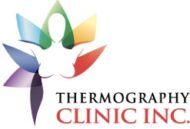Can Breast Thermography Replace Mammography?
Alexander Mostovoy, D.H.M.S.,BCCT Many have struggled with this subject and it appears to be very common to hear the same questions over and over again: “Is thermography better than mammography?”, “Does it replace mammography?”, “If I have a thermogram do I need a mammogram?” I have seen promotional material in print and on line that make the most outrageous claims about thermography which makes me cringe. Perhaps the overoptimistic view that some express comes from ignorance or from cynical promotion of fear, but in both cases it is inaccurate and downright misleading. Claims like “thermography allows us to see cancer cells 8-10 years prior to any other technology”, or “It is safer and more accurate than mammography” are inaccurate at best. As a clinical thermographer for many years, I would like to dispel some myths and establish a clear understanding about the benefits and limitations of thermography. First, let’s look at the difference between the two imaging procedures. Thermography measures heat with the use of infrared imaging. Yes, it is safe, there is no radiation and there is no contact or compression. Mammography is an x-ray and provides us with structural imaging or internal anatomy while thermography measures heat emissions and provides information regarding biological activity of the breast tissue. Infrared imaging (thermography) is a functional test, while mammography is a structural test. As a functional test, thermography is great at detecting abnormalities that other screening methods cannot see; these would include vascular activity and changes. While increased vascular activity identified by thermography may be an indication of breast cancer it could also be caused by fibrocystic findings, infection (mastitis or breast abscess), injury or trauma and even hormonal influence. (1) Further, since functional changes precede structural changes thermography can provide us with valuable information in the early indication of breast disease and even cancer. Having the early warning signs enables doctors to monitor women more closely and put preventive measures in place to help reduce certain risk factors. Now, the limitations of thermography. Thermography cannot and does not diagnose breast cancer. However, other structural examinations also have their limitations and it is only by performing a biopsy that a final diagnosis can be rendered. Thermography does not provide information on the exact anatomic position or define a specific area that needs to be biopsied. It has to be combined with other structural examinations, i.e. mammography, ultrasound or MRI. (2) As a functional test thermography serves as a risk marker that complements rather than replaces mammography. The benefits of thermography are well documented and researched, here are a few examples: Younger Women – Younger women as a group account for 18% of diagnosed breast cancers. Breast cancer in younger women is usually more aggressive and more likely to metastasize. (3) Thermography is an effective and safe breast assessment for young women. |
Fibrocystic Breast Condition – Women with fibrocystic breasts with high density breast tissue are harder to screen for breast cancer. Early cancers can mask as fibrocystic findings and are more difficult to identify with conventional screening procedures like mammography. Approximately 40% of women with fibrocystic findings and a persistent high risk thermography rating develop breast cancer within 5 years. However the same group with low risk thermography rating has less than 3% likelihood of developing breast cancer. (4)
Women on HRT or BHRT – The result of Women’s Health Initiative in 2002 clearly showed the associated higher incidence of breast cancer with synthetic HRT. (5) However, in my experience even women that are on a Bio-Identical (BHRT) hormone replacement have on occasion shown developing higher risk for breast cancer when monitored with thermography. Thermography can help monitor the effects of hormone treatment to see the effectiveness or early warning signs of something that becomes problematic over time.
In conclusion, thermography is not a competitor or a replacement for mammography. A low risk thermography rating does not mean that cancer is not present; it simply suggests that there is a statistically low probability yet there are always exceptions. Same is true when a high risk rating is established, this does not indicate the presence of cancer – it only suggests a higher level of risk and will require additional examination and closer monitoring. The most important point is that when combined with other structural or anatomical tests thermography may contribute to the best evaluation of breast health. (6)
References:
1) Ng EY, Ung LN, Ng FC, Sim LS. Statistical analysis of healthy and malignant breast thermography. J. Med Eng Technol. Nov-Dec 2001;25(6):253-263
2) Joro R, Laaperi AL, Dastidar P, et al. Imaging of breast cancer with mid and long-wave infrared camera. J Med Eng Technol. May-Jun 2008;32(3):189-197
3) Berg WA. Benefits of screening mammography. JAMA Jan 13 2010;303(2):168-169
4) Gautherie M. Thermobiological assessment of benign and malignant breast diseases. Am J Obstet Gynecol. Dec 15 1983;147(8):861-869
5) Rossouw JE, Anderson GL, Prentice RL, et al. Risks and benefits of estrogen plus progestin in healthy postmenopausal women: principal results from the Women’s Health Initiative randomized controlled trial. JAMA Jul 17 2002;288(3):321-333
6) Mital M, Scott EP. Thermal detection of embedded tumors using infrared imaging. J Biomech Eng. Feb 2007;129(1):33-39

